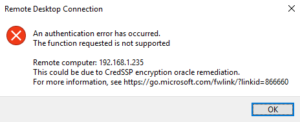What is the value of my house?
There are actually two home values, the value to the owner and the value to the potential buyer. Unfortunately, both values are emotional and not facts based on market data. The homeowner has time at home, family, years of memories, kids growing up, maintenance, maybe blood, sweat and tears from room additions, kitchen or bathroom remodeling. Obviously, the owner places a high value on his castle and rightly so.
Shoppers, on the other hand, see things differently and act on different emotions. Buyers look for that emotional spark on the first visit. The most important first impression is what drives potential buyers…in the beginning. From there, the first impression quickly turns into affordability, the cost of moving into the house, closing costs, monthly notes, taxes. Should I make an offer? What is the minimum I should offer?
Market value is somewhere between these two emotional extremes. This is where the appraiser comes in with an objective opinion backed up by market data. Market value is defined as the price that a willing buyer will pay a willing seller for a product or service. In real estate, this is known as an “arm’s length transaction,” meaning that both buyer and seller acted voluntarily and not under duress.
Where does the appraiser start and how do they get to those magic numbers called Market Value? It’s not magical at all; it is a methodical series of analytical steps.
First, the appraiser conducts a physical inspection of the property, determines the size of the living space, and takes note of any amenities, such as the number of bedrooms and bathrooms, the garage, laundry facilities, storage areas, and any special features. , such as a fireplace, pool, patio or outbuildings. After a thorough inspection, the appraiser has a starting point to arrive at market value. With all the physical data collected, the appraiser uses two or three methods to arrive at the market value. The three methods are: Market Approach – The appraiser looks for comparable homes in your neighborhood, subdivision, or within your city with comparable neighborhoods. Cost Approach/Cost Analysis: The appraiser calculates the cost to build your home based on current material and labor costs, less depreciation for structural damage, poor maintenance, and neighborhood disintegration. Income Approach: The income approach does not apply to residential market value. This approach applies to income-generating properties such as residential duplexes, apartments, and of course commercial properties.
If the property being appraised is a residential structure, many factors are taken into account beyond the physical attributes of the property. The appraiser also considers the compatibility of your home within the neighborhood, such as whether your neighborhood increases or decreases the value of your home. This involves factors of pride in ownership, which occur in most communities. However, location, location, location drives the final analysis of the market. The appraiser considers the ebb and flow of growth and its direction within your town or city due to socioeconomic factors. In addition, future planning goes a long way toward keeping your home at its current value.
In short, determining the value of your home is a complex procedure. The appraiser must have a good understanding of your city and all the socioeconomic factors that drive the market. This requires years of observation, study, and considerable research on the part of the appraiser. When considering a professional appraisal, it is best to choose an appraiser who is certified and has one of the following professional designations: MAI (American Member Institute) ASA (American Society of Appraisers) SRA (Society of Appraisers) CRA (Certified Real Estate Appraiser) ) IFAS (Independent Fee Appraisal Society). This list includes some of the most recognized professional appraisal organizations in the United States.
John Tatman




